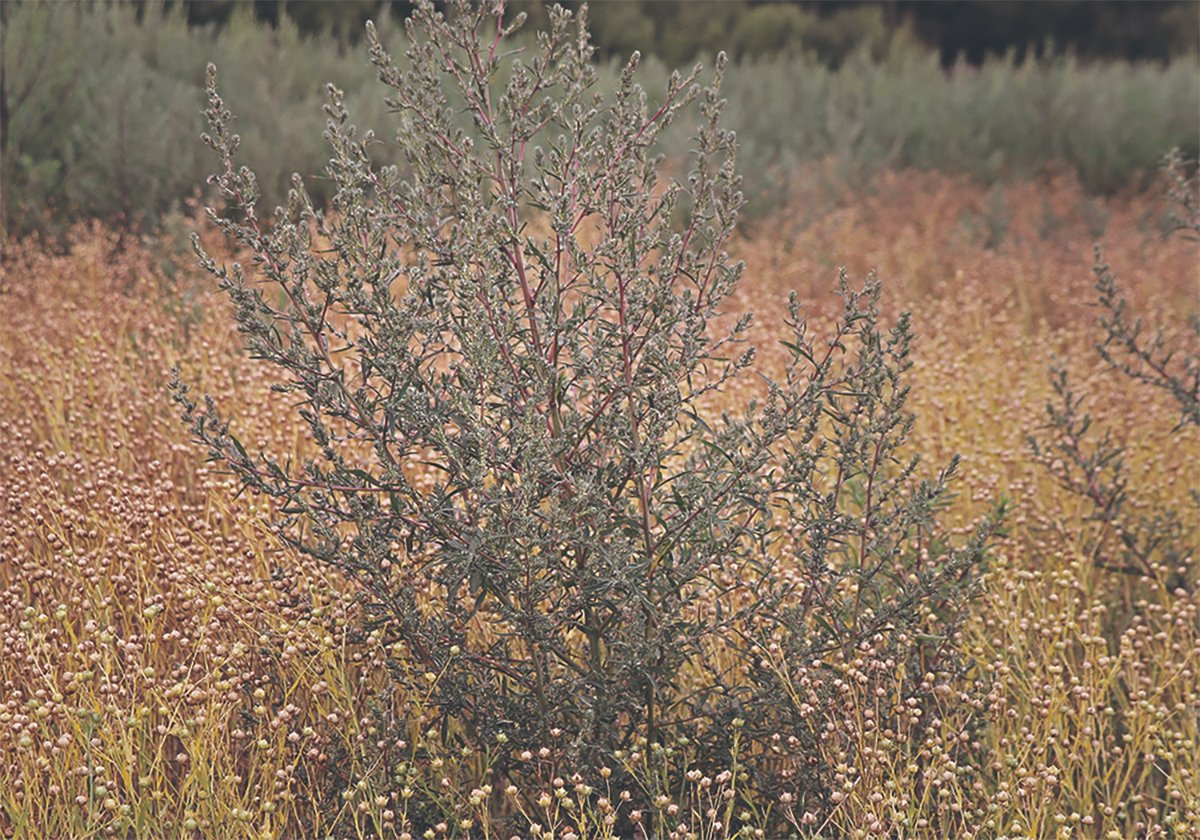There was a time when farmers and others in the agriculture industry didn’t give soil much thought.
It was often taken for granted, even though the food we produce is literally grown in the ground beneath our feet.
Many who have reported on agriculture over the decades can remember when talking about farming meant talking about plant genetics, crop protection and new farm equipment. Soil health, where the business of farming actually gets its start, wasn’t a major topic.
Read Also

Kochia has become a significant problem for Prairie farmers
As you travel through southern Saskatchewan and Alberta, particularly in areas challenged by dry growing conditions, the magnitude of the kochia problem is easy to see.
The landmark Soil at Risk report from Senator Herb Sparrow, released in 1984, brought it to greater attention, but as the years progressed, the subject went into quiet hibernation.
Fortunately, that is no longer the case.
Where once soil was seen as merely a collection of chemicals, it is now recognized as a complex biological ecosystem with relationships that are barely understood.
It is thought of as a strategic asset, associated closely with water and vital to the process of producing food.
New attention paid to soil can be seen in a number of ways, including World Soil Day, which was recognized last week.
Then there’s the plethora of research, including:
- the Canadian Soil Information Service, the country’s leading source of soil data for more than 50 years;
- the Prairie Soil Spectral Library, which gives researchers rapid, detailed insights into a region’s soil; and
- the Canadian Soil Biome Survey, which helps researchers explore how soil organisms influence carbon emissions, crop productivity and the impact of climate change.
When the Global Institute for Food Security was formed at the University of Saskatchewan in 2012, one of its first hires was a world-renowned scientist specializing in roots, soils and micro-organisms.
Soil has never been completely off the radar, of course, which is reflected in its role in popular culture. A smattering of science fiction novels over the last 65 years — some set on other planets and some on Earth in the near future — focus on humanity’s struggle to feed itself and the important role healthy soil plays in accomplishing this goal.
Of course, the most visible signal of Canadians’ increased interest is the Senate’s new report, Critical Ground: Why Soil is Essential to Canada’s Economic, Environmental, Human and Social Health, which was released earlier this year.
Coming 40 years after Sparrow’s important study, the new report makes 25 recommendations on how Canada can better protect soil health.
They include designating soil as a strategic national asset, appointing a national soil advocate and developing a long-term overarching strategy to protect and conserve soil.
The federal government, in its formal response to the report released last month, supported all but the following three recommendations. It will not:
- implement tax credits for farmers, ranchers and growers who have adopted, or are adopting, innovation and technology that support soil health;
- reinstate the Prairie Farm Rehabilitation Administration; or
- increase long-term funding for soils programming at post-secondary institutions.
The report and the federal government’s generally favourable response support those who are working to protect soil health in this country.
Many credit the Sparrow report of 40 years ago with what became farmers’ full-throated acceptance of direct seeding and everything that followed to protect Prairie soil.
How will farmers respond to the new Senate report?
Farmers are experts about the soil they manage, though one has to wonder how an increase in large farms with thousands of acres and many employees will affect that relationship.
But in the same way that cattle producers use close observation to monitor the evolution of their herds, so too should grain farmers keep a close eye on the evolution of their soil.
Karen Briere, Bruce Dyck, Barb Glen, Michael Robin, Robin Booker and Laura Rance collaborate in the writing of Western Producer editorials.

















